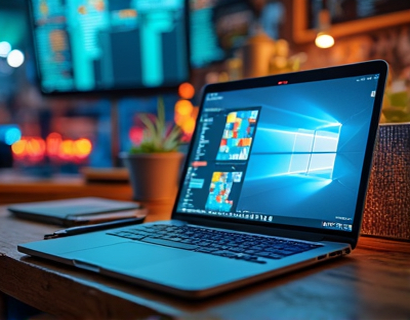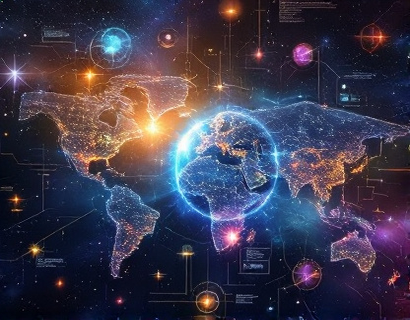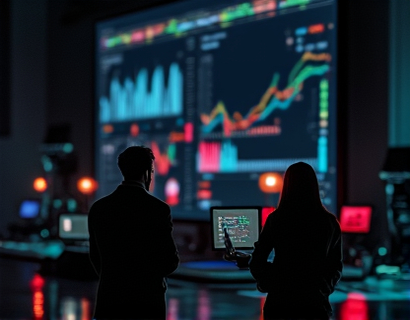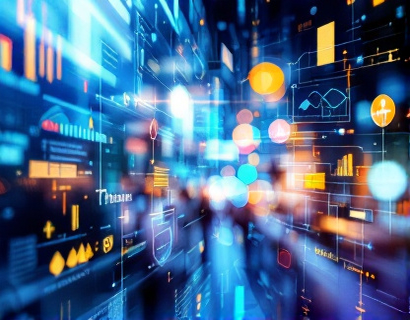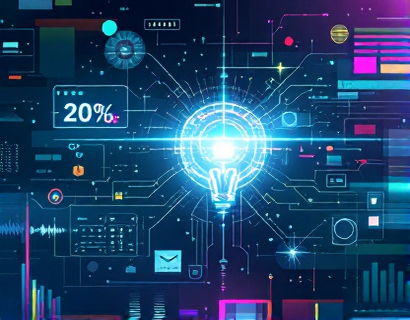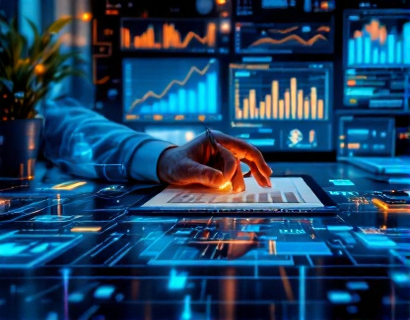Exploring the Synergy of Crypto and AI: Transforming Digital Experiences Through Innovative Solutions
The intersection of cryptocurrency and artificial intelligence (AI) represents a frontier of technological innovation, reshaping the digital landscape in profound ways. This synergy is not merely a convergence of two advanced fields but a powerful combination that is driving enhanced digital transformation across various ecosystems. As we delve into this topic, it's essential to understand how these technologies, when integrated, are redefining user connectivity, growth, and satisfaction through cutting-edge solutions.
The Foundations of Cryptocurrency and AI
Cryptocurrency, since its inception with Bitcoin in 2009, has revolutionized the way we think about money and transactions. It introduced a decentralized, secure, and transparent system based on blockchain technology. This technology ensures that transactions are immutable and verifiable without the need for intermediaries, thus reducing costs and increasing efficiency.
Artificial intelligence, on the other hand, encompasses a range of technologies that enable machines to perform tasks that traditionally required human intelligence. These tasks include learning from data, recognizing patterns, making decisions, and even performing actions that mimic human behavior. AI's capabilities span from simple automation to complex problem-solving and predictive analytics.
The combination of these two technologies creates a powerful toolkit for innovation. Cryptocurrency provides a robust and secure environment for AI applications to operate, while AI enhances the functionality and efficiency of blockchain-based systems. This synergy is particularly evident in the development of smart contracts, decentralized finance (DeFi) platforms, and tokenized assets, all of which benefit from AI-driven optimizations.
Enhancing User Connectivity
One of the most significant impacts of the crypto-AI synergy is the enhancement of user connectivity. Traditional financial systems often suffer from slow transaction times and high fees, which can be a barrier to global connectivity. Blockchain technology, powered by AI, offers a solution by enabling faster, cheaper, and more reliable transactions.
AI algorithms can optimize blockchain networks by predicting and managing network congestion, ensuring that transactions are processed efficiently. For instance, machine learning models can analyze historical data to forecast peak usage times and adjust network parameters accordingly. This proactive approach minimizes delays and reduces costs, making blockchain more accessible to a broader audience.
Moreover, AI-driven identity verification systems can streamline the onboarding process for users accessing blockchain-based services. By leveraging biometric data and behavioral analytics, these systems can authenticate users quickly and securely, reducing friction and enhancing the overall user experience. This is particularly beneficial in regions with limited access to traditional identification methods.
Driving Growth Through Data Analytics
Data analytics is a cornerstone of growth in the digital economy, and the integration of AI with cryptocurrency amplifies its potential. Blockchain's inherent transparency and immutability provide a rich source of data that can be harnessed by AI to gain insights and drive decision-making.
AI algorithms can analyze transaction patterns, user behavior, and market trends to identify opportunities for growth. For example, predictive analytics can forecast market movements, helping investors make informed decisions. Smart contracts can automate trading strategies based on predefined conditions, executing trades at optimal times to maximize returns.
Furthermore, AI can enhance the development and management of decentralized applications (dApps). By analyzing user interactions and feedback, AI can suggest improvements and new features, ensuring that dApps remain relevant and competitive. This continuous feedback loop fosters innovation and user engagement, driving the growth of the decentralized ecosystem.
Improving User Satisfaction
User satisfaction is crucial for the adoption and success of any technology. The combination of cryptocurrency and AI is particularly effective in this regard, as it addresses several pain points that users face in traditional systems.
One key area is security. AI-driven security solutions can detect and mitigate threats in real-time, protecting user assets and data. Machine learning models can identify anomalous behavior and potential vulnerabilities, enabling proactive measures to safeguard the ecosystem. This level of security reassures users and builds trust in blockchain-based services.
Another aspect is personalization. AI can tailor experiences to individual users by analyzing their preferences and behavior. In the context of cryptocurrency, this means providing personalized investment recommendations, customized wallet interfaces, and relevant content. Such personalization enhances user satisfaction and encourages longer engagement with the platform.
Additionally, AI can improve customer support through chatbots and virtual assistants. These AI-powered tools can handle a wide range of queries and issues, providing instant and accurate responses. This not only reduces the workload on human support teams but also ensures that users receive timely assistance, further enhancing their experience.
Innovative Solutions in DeFi and NFTs
Decentralized finance (DeFi) and non-fungible tokens (NFTs) are two areas where the crypto-AI synergy is particularly transformative. DeFi platforms leverage AI to create more efficient and user-friendly financial services.
For instance, AI can optimize lending and borrowing processes by assessing creditworthiness more accurately and dynamically adjusting interest rates based on market conditions. Smart contracts can automate these processes, ensuring transparency and reducing the risk of fraud. This results in more accessible and fair financial services for users worldwide.
NFTs, which represent unique digital assets, benefit from AI in terms of creation, authentication, and marketplaces. AI algorithms can generate unique digital art and content, ensuring the scarcity and authenticity of NFTs. Additionally, AI-driven marketplaces can match creators with buyers based on preferences and past transactions, enhancing the overall user experience.
Furthermore, AI can predict trends in the NFT market, helping creators and investors make informed decisions. By analyzing data from various sources, AI can identify emerging artists, popular themes, and potential investment opportunities, adding value to the ecosystem.
Challenges and Considerations
While the potential of crypto-AI integration is vast, there are several challenges that need to be addressed. One major concern is regulatory compliance. The decentralized nature of blockchain and the global reach of cryptocurrency transactions complicate regulatory frameworks. AI can help navigate these complexities by providing real-time compliance monitoring and ensuring adherence to varying regulations across jurisdictions.
Another challenge is scalability. As the adoption of blockchain and AI grows, the need for scalable solutions becomes critical. AI can optimize blockchain protocols to handle increased transaction volumes without compromising speed or security. Techniques such as sharding and layer 2 solutions, enhanced by AI, can significantly improve the scalability of blockchain networks.
Privacy is also a significant concern. While transparency is a strength of blockchain, it can also expose sensitive information. AI-driven privacy solutions, such as zero-knowledge proofs, can ensure that transactions remain confidential while maintaining the integrity of the blockchain. This balance between transparency and privacy is essential for widespread adoption.
Future Prospects
The future of the crypto-AI synergy holds immense promise. As both technologies continue to evolve, we can expect even more innovative applications and integrations. One exciting area is the development of AI-powered decentralized autonomous organizations (DAOs). These organizations can leverage AI for decision-making, resource allocation, and governance, creating more efficient and responsive community-driven entities.
Another frontier is the integration of AI with quantum computing, which could revolutionize blockchain security and performance. Quantum algorithms could solve complex problems that are currently infeasible, enhancing the capabilities of blockchain and AI combined.
Moreover, the rise of the Internet of Things (IoT) presents new opportunities for crypto-AI integration. AI can manage and secure vast networks of IoT devices, while blockchain can ensure the integrity and privacy of the data generated by these devices. This synergy can lead to smarter cities, more efficient supply chains, and advanced healthcare solutions.
In conclusion, the convergence of cryptocurrency and AI is driving a new era of digital transformation. By enhancing user connectivity, driving growth through data analytics, and improving user satisfaction, these technologies are reshaping the tech ecosystem. As we look ahead, the potential for innovative solutions and applications is vast, promising a future where digital experiences are more seamless, secure, and personalized.







